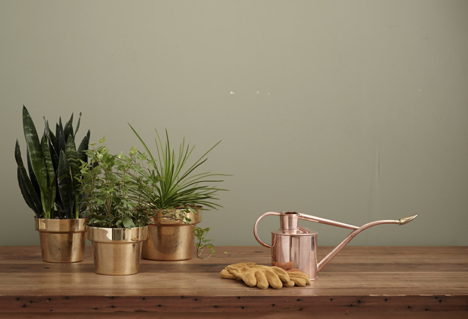
There are so many reasons why we need houseplants. They can purify indoor air, they beautify our living spaces, and they help alleviate stress and anxiety. That is why it is every houseplant keeper’s responsibility to take good care of their plants and treat them well. However, many people end up killing their plants even as much as they love them. Why so?
Well, plants die or have poor health for three main reasons: Poor watering habits, insufficient nutrients, and poor lighting. Watering problems are the most notorious of all three. Most people overwater their houseplants thinking that it is a plant’s “thing” to love a lot of water while others underwater the plants out of negligence. Both are wrong.
To develop a workable watering routine for your plants, you need to first understand that each plant species has different watering needs. The need is also dependent on where you keep the plant within the house, the growing medium, outdoor weather, and the plant’s pot.
To help you master the art of watering, here are 8 tips to consider:
- Know when to water
Water your plants more during spring and summer and less during winter. However, even during the warm months, you must be careful not to get the compost soggy or waterlogged. Too much water in the growing pot brings diseases, which then kill the plant. Create drainage holes at the bottom of your growing pot to allow excess water to drain out in case you overwater. - Water from below
Watering from underneath works better than the traditional way of watering from above- for many reasons! When you use a saucer placed below the compost, for example, the chances of overwatering are minimal. Underneath watering is also a good way of getting water to the roots, it is less prone to draining nutrients out, and is good at maintaining humidity. - Invest in self-watering pots
Self-watering pots eliminate the problem of over-watering or under-watering and saves you time because the plant literally waters itself. Your job is just to refill the water reservoir, say on a weekly or monthly basis, and then leave the plant to do the rest. - Avoid overheating
Fluorescent and HID lights emit a lot more heat than light, so they make your plant’s compost to dry out extremely fast and end up interrupting your watering schedule. Invest in quality LED grow lights so that your plants can start needing less frequent watering. - Soak your plants in a tray
If you don’t have the time to water your plants regularly, you can achieve your watering goals by soaking your plant pots in a large container filled with fresh water. You can also soak them in the sink or in the bathtub but ensure that the water level is only a few centimeters high. After allowing them to absorb water for about an hour, remove them and let them drain on the counter under your kitchen cabinets before placing them back. You manage to water all the plants in one go, as you go on with your household chores. - Help them retain moisture
Adding clay pebbles on the surface of the growing pot helps the compost to retain moisture. If you don’t have clay pebbles, gravel or regular pebbles will do. The pebbles work by slowing down evaporation, so you don’t need to water the plants too often. - Use the right type of water
Avoid using water that you got from the faucet to water your plants. The water needs to be at room temperature. If you are using tap water, ensure that it doesn’t have too much dissolved Chlorine. Chlorine is a highly toxic substance. Rainwater is great, but you need to ensure that it isn’t polluted, especially if you live in a highly industrialized area. If you use water from the well, ensure that it is not too alkaline. - Aerate the soil
Outdoor soil is aerated by worms and other crawlers. Indoors, you have to aerate the soil by poking holes in the soil in order to enhance water movement in the soil. Large, dry pockets of soil hinder water movement, causing uneven moisture distribution.
Conclusion
Water is an important vessel that transports minerals to all the right places within a growing container, and that cools down the plants. If your plant looks wilted, you need to water it ASAP lest it dies. Don’t allow that to happen under your watch. However, be careful not to invite pests through overwatering.
